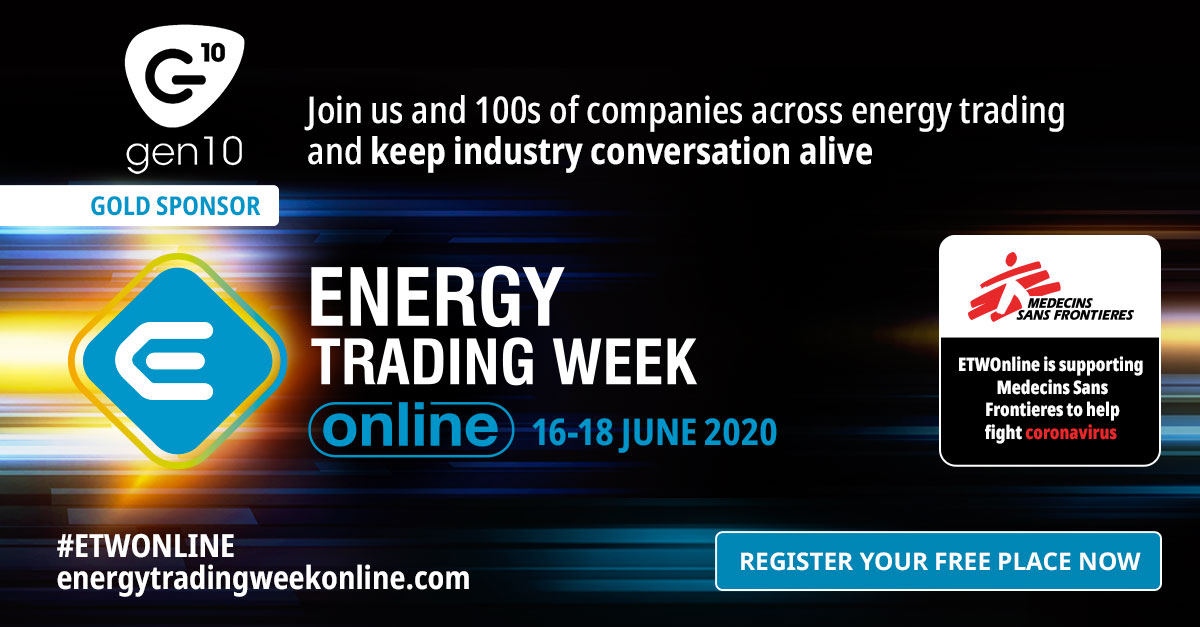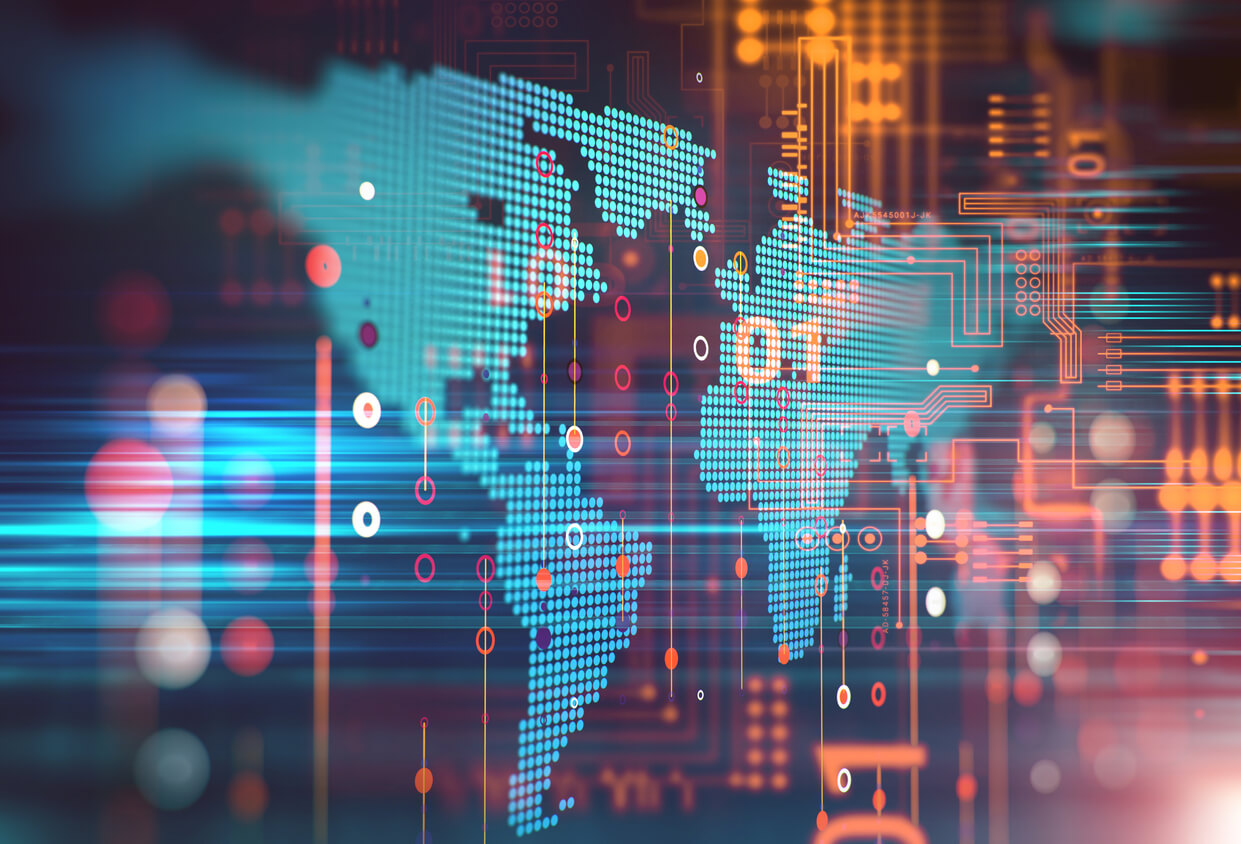Gen10 recently sponsored Energy Trading Week Online, a leading online event for energy traders. Below, we summarise our main takeaways from the 3 days of panel sessions and what they might mean for trading companies and utilities moving forward.
Disruption isn’t over
The event began with a discussion of the impact of Covid-19 on energy markets, economies and working practices. Although many countries are beginning to ease their lockdown restrictions, the impact of Covid-19 is likely to continue to pose a risk to the energy market in at least the medium term. Credit risk is the most significant upcoming challenge for risk managers and technology solutions to address. Many energy firms have had their credit rating cut, and bad debts are expected to begin to hit B2B suppliers, leading to inaccurate MTM and hedging.
Credit was raised as a potential threat to less-capitalised entities in particular, with the question of whether they would retain market access. Liquidity risk and access to credit lines is one of the risk factors of Covid-19 that Gen10 recently discussed in another article, where we explored how being able to demonstrate that all aspects of their financial and operational risk are under control will be critical to these business’ survival.
Over the long term, panellists expect to see more market volatility. They do anticipate that the long-term market will be driven more by politics and market fundamentals (including renewable generation driving more intraday trading) than by disruptive events.
The way we work is changing – for good?
One positive aspect of the handling of the crisis that was repeatedly mentioned was how well many companies have been able to respond to remote working, thanks to the fast actions of companies, exchanges and regulators.
Whilst many reported that the transition to a fully-remote or majority-remote workforce was easier than anticipated and did not have a negative impact on operations, it was noted that organisations need technology to support remote working, and those that already had it in place were described as the winners.
There were concerns around maintaining company culture, reducing time spent in virtual meetings and managing the operational risks of having teams working from home, including coordinating operations. When attendees of one session were asked about their biggest working from home “headache”, almost two thirds (65%) responded with ‘maintaining relationships’, choosing this above ‘remembering to shift from “crisis management” to “leadership”’ and ‘short term adaptation to new communications technologies’. This demonstrates how willing the energy industry can be to adopt new technologies and move with agility when there is a need to.
The overall view was that working from home has been a positive experience that many expect to continue with, at least in some form; one panellist explained how people are making fewer mistakes as they are less distracted and more relaxed at home. External sources suggest that remote working could be a long-term trend for companies that are able to take advantage of it, with 74% of CFOs intending to shift at least some employees to remote work permanently, and the risk that companies who do not offer flexible working risk losing out on recruiting top talent.
As an industry we have proven that we can manage workloads, enact change and move forward with technology implementations whilst enjoying these other benefits of remote working.
Data is critical
One panellist explained that the megatrends driving disruption include the path to zero carbon, the decentralisation of power with smaller, often renewable generators, and the capability to embrace big data. The lower costs of storing data and processing power means that amongst other growing technological capabilities, big data analytics is becoming more open to all players.
Accessing data was highlighted as a particular problem that still needs to be addressed on the digitalisation journey; if you are storing large amounts of data but it can’t be retrieved in a useable format then it is not useful for the business. However, it was noted that databases are moving away from monolithic structures to embrace more agile data models. Different advantages of accessible data were discussed, and one panellist explained that their goal is to encourage self-service analytics: where people on the business side who are using the data as part of their role can create the analytics they need, supported by the IT function or solution providers.
Many companies are still on the journey to data digitalisation, by which we mean the ability to create better business results using data. In particular, discussions included cleaning trading information, standardising data and changing how people think about it. For example, by creating a centralised data resource that is fed by and improves outcomes for the entire trading desk.
Pitfalls on this journey were also discussed. The biggest factor according to panellists in different sessions was identifying the commercial outcome the company is looking to achieve. It was commented that there are too many Proofs of Concept that focus on using a particular technology rather than starting from what the business wants to get out of the project.
Technology is making processes easier
In addition to an enlightening session exploring how EFET are helping the industry standardise settlement matching and automate payments to create shorter settlement cycles, there were several discussions around digitalisation.
Digitalisation is frequently discussed at industry events, often in the form of a journey or ongoing project that will not necessarily reach an end date. However, the context of digitalisation discussions does appear to be evolving, as the focus of conversation shifts from simply how to carry out existing processes online to how we can use new digital tools to create better processes that can deliver greater value.
One panellist commented that streamlining the bill of lading, logistics and payment processes would have the biggest impact in future. This was of particular interest to Gen10 as we have been advocates of technology-driven logistics processes for many years. Indeed, Gen10 solutions already include logistics automation that creates and emails documents including bills of lading and invoices from with the system, progresses contracts through your internal processes and provides complete visibility to all teams. Gen10 apps also integrate with other technology such as accounting systems in real-time, meaning that once a shipment reaches the appropriate stage in your process, you can automatically populate your accounting system with this information. And because many within the industry have told us that they do not want to replace an older C/ETRM to gain this extra functionality, it is possible to add Gen10 apps onto an existing system to help you get the best value from both technologies.
The final panel session was a discussion of how energy traders can get more out of their technology, comparing replacing legacy C/ETRM systems with improving the technology already in place. What was clear was that legacy systems are slowing down businesses, often not supporting operations so that the business is actually run on spreadsheets rather than in a transparent system that can automate and accelerate processes. Legacy technology can also create problems in being difficult to integrate with other systems, hard to migrate and expensive to maintain.
It was also pointed out that older systems may not be meeting the needs of the business, particularly in terms of data and reporting. It was clear that when technology can’t deliver real-time reports and data visualisations it is putting traders at a significant disadvantage. Compared to modern commodity management technology such as Gen10’s, where MTM, P&L and other reports take care of themselves, updating in real-time as people go about their role, some older C/ETRM systems are only able to provide weekly or even monthly MTM. And as discussed in the earlier sessions, in the current climate this approach is no longer merely an inconvenience but a significant risk to businesses.
The audience certainly seemed to appreciate the fact that technology can form either a critical competitive advantage or a risk to the business, with 55% stating that they were thinking of extending or adding to their legacy E/CTRM with additional functionality, compared to only 16% who responded “no”.
Energy Trading Week Online discussed a wide range of topics important to energy traders and utility companies, and we hope other attendees came out of the event with even more useful insights. For Gen10, it was incredibly positive to see so many people across the energy sector really take an interest in how technology is changing our industry and helping us respond to disruption.



